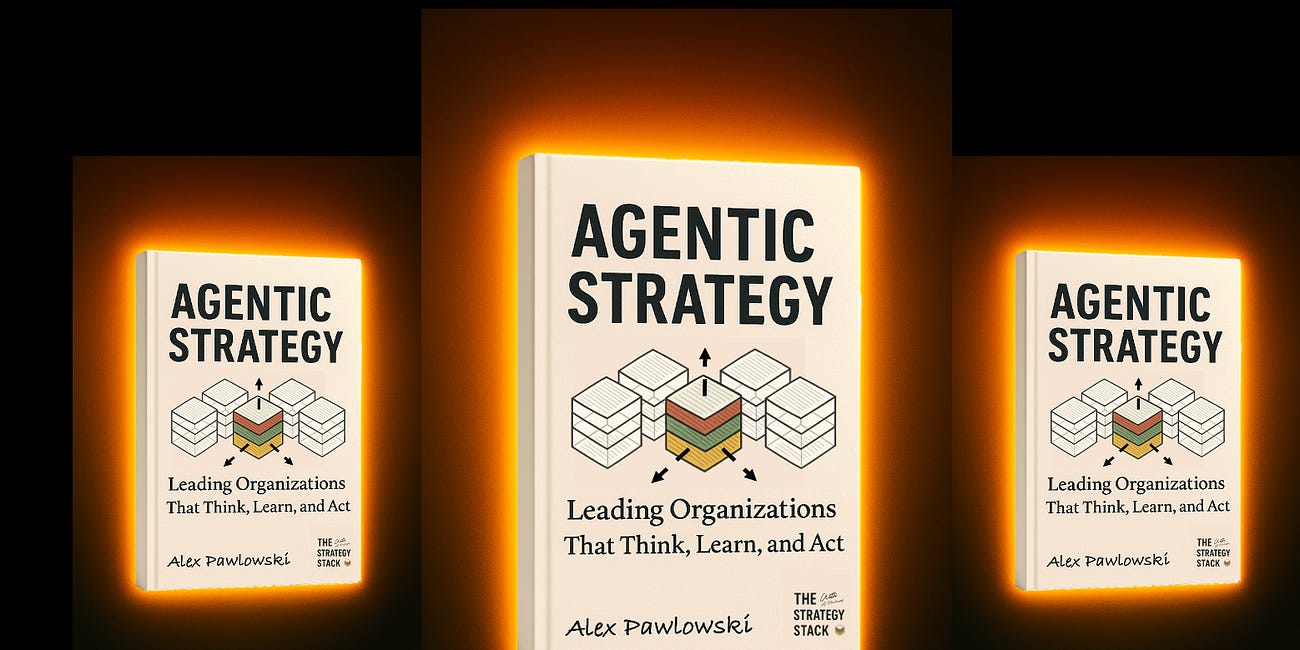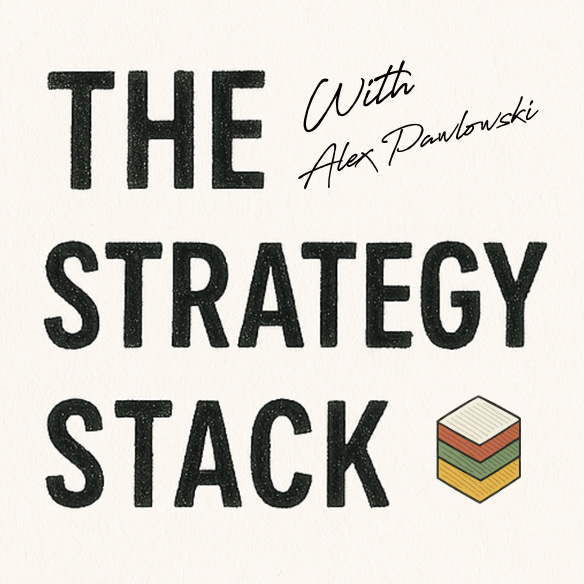⚡ Signal Brief — June 27, 2025
#59: This Week In Tech & Why CSOs must update their mental models for strategic survivability
This Week in Tech: AI as Infrastructure, Territory, and Threat
This week, cracks in the AI infrastructure narrative surfaced—reminding us that scale without safeguards is a liability, not a moat. A Business Insider exposé revealed that Scale AI had mishandled project workflows using unsecured Google Docs, exposing confidential files from clients like Meta, Google, and xAI. The fallout was swift: internal audits, restricted contractor access, and renewed scrutiny on the operational discipline of even the most well-funded AI unicorns. Trust, it turns out, is harder to scale than model performance.
Meanwhile, Tencent continued its quiet boardroom recalibration, adding Professor Ke Yang to its Nomination Committee—a subtle move with broader implications for tech governance across Asia. On the Western front, Elon Musk’s X platform moved to ban hashtags in advertisements, aiming for a cleaner user experience and improved surfacing of AI-generated content. While minor on the surface, it hints at a broader shift: platforms trying to rebalance discovery, monetization, and content provenance in the AI age.
Venture markets stayed red-hot. Cyera grabbed $540M to fortify AI data security, while Multiverse Computing brought in $215M to push quantum-AI forward. Mira Murati’s Thinking Machines Lab made headlines with a $2B raise at a $10B valuation, signaling serious capital intent behind agentic AI. From autonomous delivery bots in LA (Coco Robotics) to AI-powered F&B insights in NY (Tastewise), one trend was clear: strategic-sector AI is pulling the deepest pockets. Defense, energy, and enterprise verticals continue to dominate the AI capital map—smart money is going where impact meets urgency.
But money isn’t the only mover. On the geopolitical front, tech and tension collided. Iranian airstrikes and diplomatic standoffs spilled into tech’s physical footprint as missiles landed near Microsoft’s Beersheba office—turning cloud infrastructure into a literal pressure point. Oil markets briefly wobbled, buffered by measured U.S. response and a calming signal from the Fed, but the Strait of Hormuz remains a strategic chokepoint for both energy and information flows.
Adding to the complexity, fresh reporting from Reuters and Bloomberg revealed how Chinese firms are sidestepping U.S. chip sanctions—routing Nvidia hardware through Malaysian data centers in a quiet rerouting of the global AI supply chain. As enforcement gaps widen, it’s no longer just a question of who builds the chips—but who can trace them.
The bottom line? From back-office workflows to front-line geopolitics, AI is no longer just a technology—it’s a fault line. And this week, those lines grew sharper.
Here’s the full breakdown:
🔮 AI & Big Tech
Scale AI data exposure (June 24–26): Business Insider uncovered that Scale AI mistakenly used public Google Docs to manage client projects—including confidential files from Meta, Google, and xAI—exposing proprietary training data and contractor personal info. This sparked swift action: Scale locked down access, launched internal investigations, and temporarily disrupted contractors’ workflows .
🎤 Tech & Organizational Moves
Tencent boardroom shuffle (effective June 27): Professor Ke Yang was added to Tencent’s Nomination Committee, expanding the committee to six members.
📈 Market & Platform News
X (formerly Twitter) policy update (starting June 27): Elon Musk announced the banning of hashtags in advertisements to streamline the platform’s look and improve discovery of AI-generated content.
💸 Venture Capital & Startups
Cyera (NY) – $540 M Series E for data‑security AI
Multiverse Computing (Spain) – $215 M for quantum‑AI
Coco Robotics (LA) – $80 M for autonomous delivery bots
Tastewise (NY) – $50 M AI insights for F&B
FERMÀT (SF) – $45 M Series B on commerce AI
Top U.S. megadeals: The biggest U.S. rounds this week skewed towards AI-powered defense and energy solutions, reinforcing the trend that LPs are backing strategic-sector AI.
Thinking Machines Lab: Former OpenAI staffer Mira Murati’s new startup closed a $2 B round at a $10 B valuation, aiming to pioneer agentic AI—facing early pushback from safety advocates accusing OpenAI of sidelining internal warnings.
🌍 Geopolitics & Tech Power
Middle East tensions & tech infrastructure: On June 20, Iran’s foreign minister signaled readiness for diplomatic talks if Israel halts strikes—conference held in Geneva alongside global condemnations of escalating airstrikes on Iranian nuclear military sites. Meanwhile, missile strikes near Microsoft’s office in Beersheba underscored the direct geopolitical ramifications for global tech firms operating in sensitive regions.
Oil market pressure: Though markets saw a temporary dip amid the flare-up, U.S. stocks recovered on June 24–25 following President Trump’s restrained posture in retaliation for a U.S. base strike in Qatar—and supportive tone from Fed’s Michelle Bowman. Brent crude fell back to ~$71/bbl but remains volatile with Strait-of-Hormuz concerns persisting.
Chip & AI supply chain geopolitics: A Reuters/Bloomberg piece highlighted how Chinese entities are circumventing U.S. export curbs on Nvidia chips via Malaysian data centers, spotlighting enforcement challenges in controlling global AI chip flows.
🧭 The Strategic Signal
In startup finance, “Default Alive” means a company will reach profitability before running out of money. But in large orgs, this binary misses something bigger:
A company can be financially alive—while being strategically dead.
Strategy teams often over-index on growth metrics, burn rates, and expansion plans… without asking the hardest question:
Are we building something that should survive?
💣 The Real Risk
You may be scaling headcount, expanding GTM, and investing in tech—but the core strategy may still be:
Built on outdated assumptions
Misaligned with real user behavior
Propped up by cheap capital, not competitive edge
Internally unsupported by execution capability
When CSOs treat “survival” as purely financial, they miss the strategic breakeven:
When does our operating model justify its own existence?
📊 Visual: The Strategic Alive/Dead Map
🟢 Default Strategic Alive
The value proposition has traction and differentiation
Execution is compounding knowledge
Teams are aligned and own key loops
You’d bet on this business even if funding paused
🟡 Zombie Mode (Default Financial Alive, Strategically Dead)
Revenue is growing, but churn is hidden
Teams are delivering… but disconnected from strategy
Strategy docs look good, but ops tells a different story
AI tools are multiplying, but decision quality isn’t
🔴 Default Strategic Dead
Core bets are based on outdated assumptions
Pilots never scale, wins don’t compound
Org design is copy/pasted from last cycle
No clear ownership of key learning loops
🧠 What Smart CSOs Are Doing
✅ Reframing survival: Not “how long can we coast?” but “what would we rebuild if we had to restart today?”
✅ Auditing strategic vitality: Are we generating new insight loops? Are bets connected to real decisions?
✅ Revalidating assumptions quarterly: Not just markets, but internal capacity and team conviction
✅ Killing old growth narratives: Even if they still “work on paper”
💬 Mini Diagnostic
Ask your team:
If capital dried up today, would we still believe in this strategy?
Which part of our org feels alive—and which parts feel stuck?
Are we compounding or just maintaining?
🧩 Bonus Resource
👉 Coming Monday: The Strategic Breakeven Map
A visual tool to help you map where growth, spend, and margin intersect—and where they silently drift apart. Includes a poster, prompts, and checklist to run your own “strategic viability” workshop.
📩 What’s Next
📅 Coming Monday: “The Strategic Breakeven Map” — a new visual tool and cheat sheet to help CSOs pressure-test growth stories and spending logic across teams.
🧠 We’ll map how to connect real value delivery with financial narratives—and where to draw the line between justified investment and strategic fantasy.
Hit subscribe to get it in your inbox. And if this spoke to you:
➡️ Forward this to a strategy peer who’s feeling the same shift. We’re building a smarter, tech-equipped strategy community—one layer at a time.
Let’s stack it up.
A. Pawlowski | The Strategy Stack








